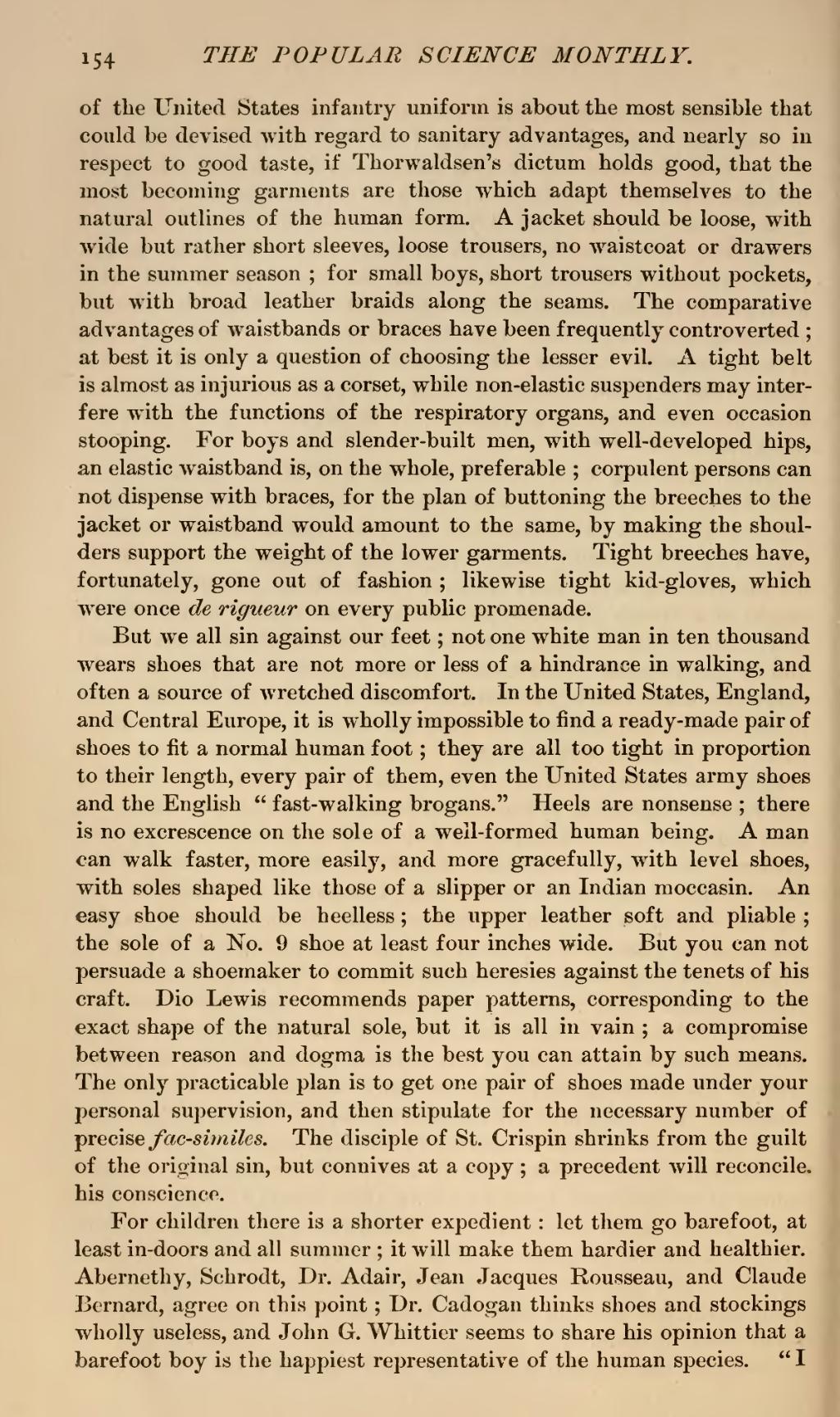of the United States infantry uniform is about the most sensible that could be devised with regard to sanitary advantages, and nearly so in respect to good taste, if Thorwaldsen's dictum holds good, that the most becoming garments are those which adapt themselves to the natural outlines of the human form. A jacket should be loose, with wide but rather short sleeves, loose trousers, no waistcoat or drawers in the summer season; for small boys, short trousers without pockets, but with broad leather braids along the seams. The comparative advantages of waistbands or braces have been frequently controverted; at best it is only a question of choosing the lesser evil. A tight belt is almost as injurious as a corset, while non-elastic suspenders may interfere with the functions of the respiratory organs, and even occasion stooping. For boys and slender-built men, with well-developed hips, an elastic waistband is, on the whole, preferable; corpulent persons can not dispense with braces, for the plan of buttoning the breeches to the jacket or waistband would amount to the same, by making the shoulders support the weight of the lower garments. Tight breeches have, fortunately, gone out of fashion; likewise tight kid-gloves, which were once de rigueur on every public promenade.
But we all sin against our feet; not one white man in ten thousand wears shoes that are not more or less of a hindrance in walking, and often a source of wretched discomfort. In the United States, England, and Central Europe, it is wholly impossible to find a ready-made pair of shoes to fit a normal human foot; they are all too tight in proportion to their length, every pair of them, even the United States army shoes and the English "fast-walking brogans." Heels are nonsense; there is no excrescence on the sole of a well-formed human being. A man can walk faster, more easily, and more gracefully, with level shoes, with soles shaped like those of a slipper or an Indian moccasin. An easy shoe should be heelless; the upper leather soft and pliable; the sole of a No. 9 shoe at least four inches wide. But you can not persuade a shoemaker to commit such heresies against the tenets of his craft. Dio Lewis recommends paper patterns, corresponding to the exact shape of the natural sole, but it is all in vain; a compromise between reason and dogma is the best you can attain by such means. The only practicable plan is to get one pair of shoes made under your personal supervision, and then stipulate for the necessary number of precise fac-similes. The disciple of St. Crispin shrinks from the guilt of the original sin, but connives at a copy; a precedent will reconcile, his conscience.
For children there is a shorter expedient: let them go barefoot, at least in-doors and all summer; it will make them hardier and healthier. Abernethy, Schrodt, Dr. Adair, Jean Jacques Rousseau, and Claude Bernard, agree on this point; Dr. Cadogan thinks shoes and stockings wholly useless, and John G. Whittier seems to share his opinion that a barefoot boy is the happiest representative of the human species. "I

